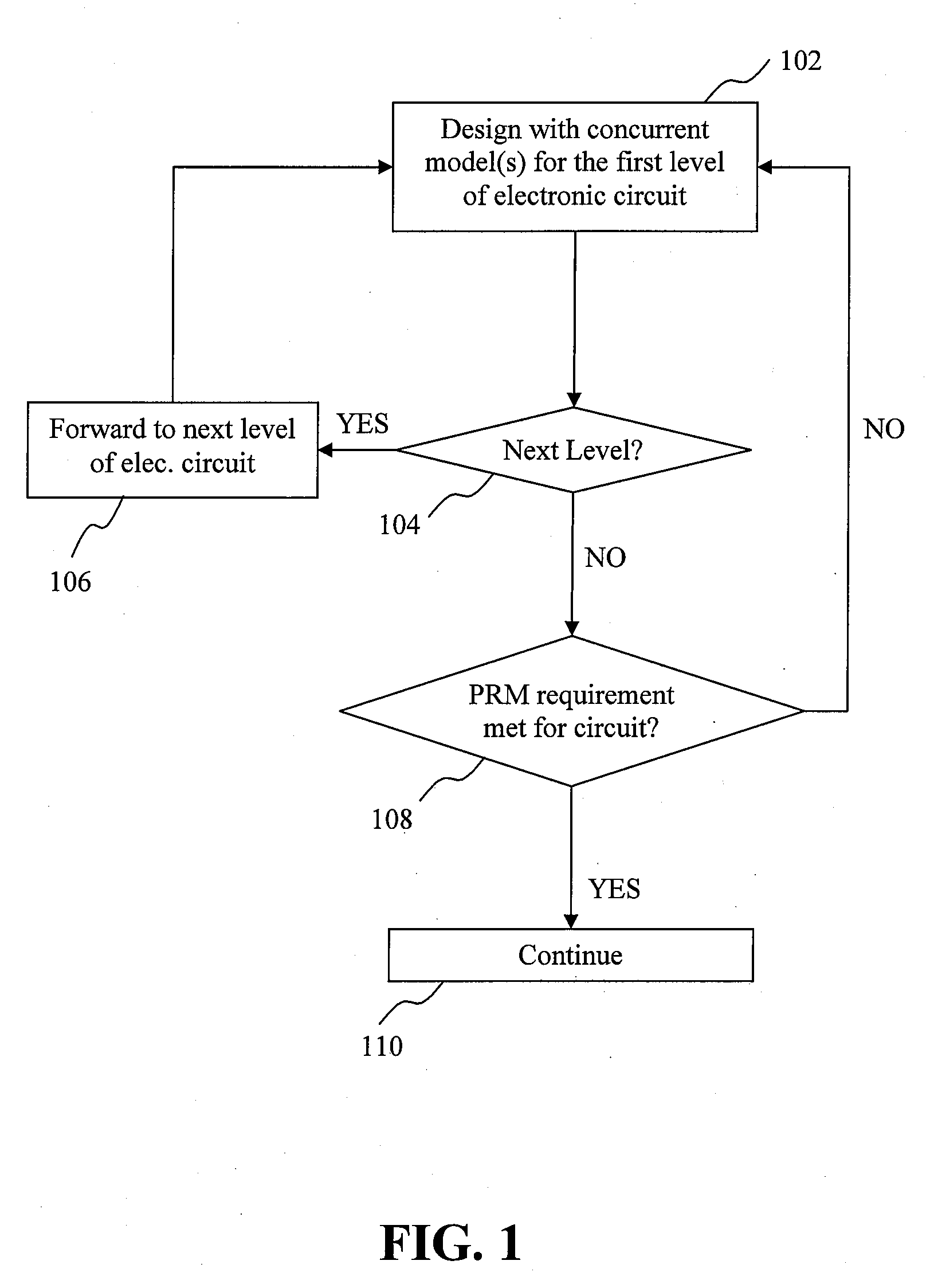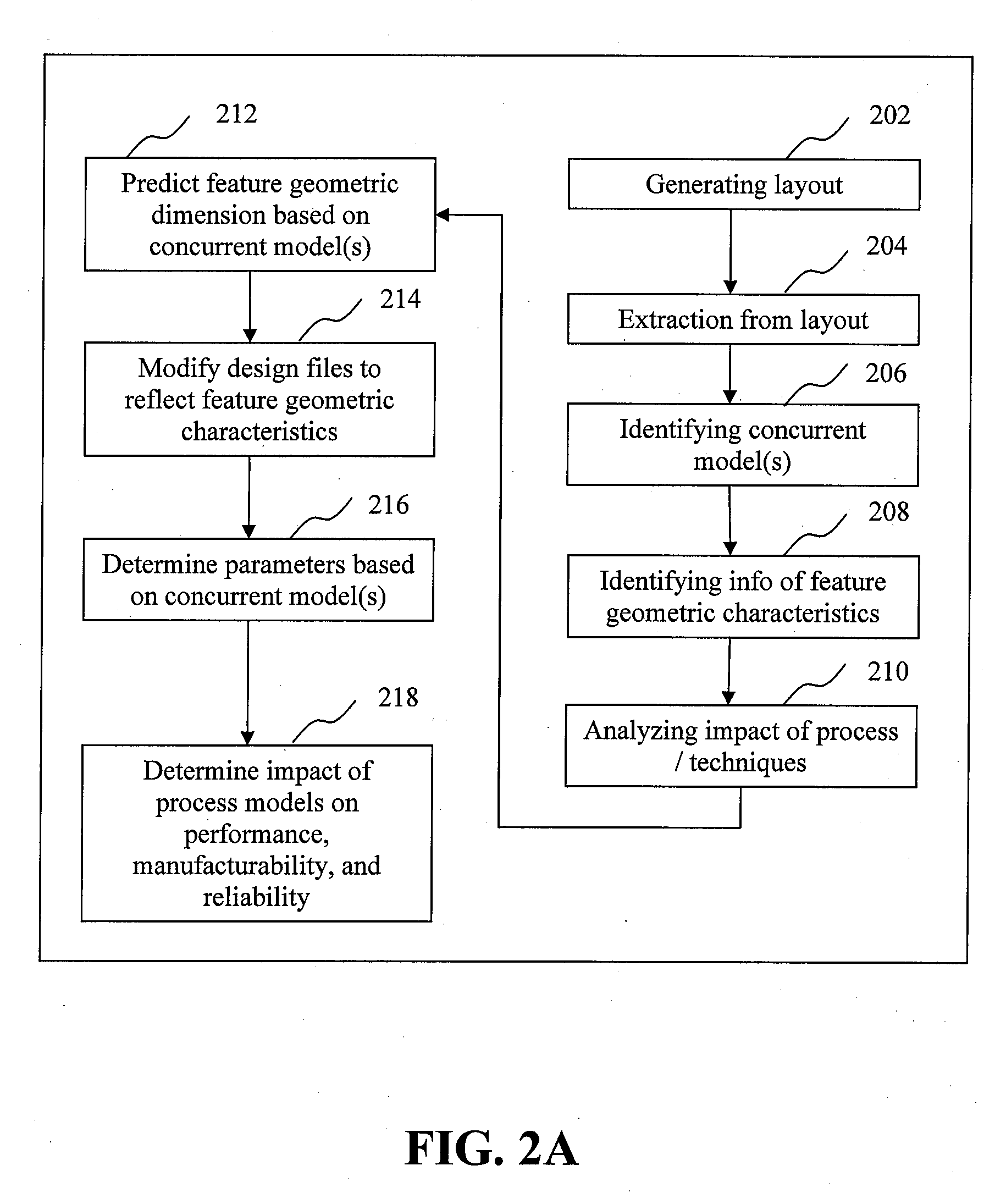Method, system, and computer program product for concurrent model aided electronic design automation
a technology of electronic design and computer program, applied in the field of method, system and computer program product of concurrent model aided electronic design automation, can solve the problems of time delay, insatisfactory solution, and certain wires being shorter at the expense of making other wires longer
- Summary
- Abstract
- Description
- Claims
- Application Information
AI Technical Summary
Benefits of technology
Problems solved by technology
Method used
Image
Examples
Embodiment Construction
[0024]The present invention is directed to an improved method, system, and computer program product for designing an electronic circuit with concurrent models for fabrication, metrology, or image processing processes or techniques (e.g., RET). Some embodiments of the present invention utilize the above method, system, and / or computer program to produce more effective and accurate design closure for electronic circuit designs by evaluating the performance, manufacturability, or reliability (PMR) of the electronic circuit. The method or system of various embodiments of the present invention takes into consideration the geometric characteristics of one or more features of the electronic circuit to be manufactured or the impact of variation of surface topology of an underlying level and to more accurately and effectively estimate various metrics of the electronic circuit and thus more precisely predict or evaluate various objectives of the electronic circuit.
[0025]FIG. 1 depicts a high ...
PUM
 Login to View More
Login to View More Abstract
Description
Claims
Application Information
 Login to View More
Login to View More - R&D
- Intellectual Property
- Life Sciences
- Materials
- Tech Scout
- Unparalleled Data Quality
- Higher Quality Content
- 60% Fewer Hallucinations
Browse by: Latest US Patents, China's latest patents, Technical Efficacy Thesaurus, Application Domain, Technology Topic, Popular Technical Reports.
© 2025 PatSnap. All rights reserved.Legal|Privacy policy|Modern Slavery Act Transparency Statement|Sitemap|About US| Contact US: help@patsnap.com



